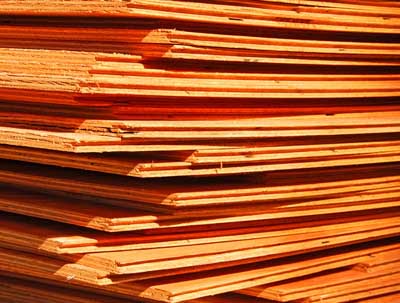Home Improvement
Plywood is a versatile and strong construction material made by layering thin sheets of wood. Understanding plywood can help you save money and achieve better results in your projects. For instance, you can opt for a less expensive plywood piece that has only one visible side instead of a perfect one. You can also choose a thinner plywood that will suffice for your needs instead of a thicker one. Additionally, plywood comes in different types of glues, veneers, and finishes, which can affect its performance and cost. By being aware of these characteristics, you can make informed decisions and achieve the best outcome for your project.
 Plywood is a popular material due to its resistance to shrinking and cracking. |
Plywood is a strong, lightweight, and rigid material that is available at home centers, hardware stores, and lumberyards. Unlike other types of lumber, plywood doesn’t split, chip, crack all the way through, or crumble due to its high-impact resistance and cross-laminate construction that restricts expansion and contraction. When purchasing plywood, you know exactly what size you’re getting, and it comes in two types: exterior and interior. Exterior plywood is made with waterproof glue and should always be used for any exposed application, while interior plywood is made with highly resistant glues that can withstand moisture to a certain extent. When buying plywood, look for a back stamp or edge marking bearing the initials APA or DFPA, as these organizations inspect and test all plywood to ensure high quality and accurate grading. The most critical grading category for most home projects is the appearance grade of the panel faces. Plywood is categorized into different grades based on its common uses, with A-A being the highest grade and C-C being the lowest.
The table shows different types of drywall that can be used for various purposes. The first type is the standard drywall that can be used for most indoor walls and ceilings. The second type is moisture-resistant drywall that is suitable for areas with high humidity such as bathrooms and kitchens. The third type is fire-resistant drywall that can delay the spread of fire. The last type is unsanded drywall that is used for backing and rough construction that is exposed to weather. If you are looking for more information on home repair tools, materials, or lumber, check out the articles listed in the bulleted list.
FAQ
1. What is plywood?
Plywood is a type of engineered wood made from thin layers of wood veneer that are glued together to create a strong and durable sheet. It typically has an odd number of layers, with the grain of adjacent layers running perpendicular to each other, which provides strength and stability. Plywood is commonly used in construction, furniture, and packaging due to its strength, durability, and versatility.
2. What are the advantages of using plywood?
Plywood has several advantages over other types of wood and engineered wood products, including its strength, stability, and durability. It is also relatively lightweight, easy to work with, and can be cut and shaped into various sizes and shapes. Additionally, plywood is resistant to shrinking, warping, and cracking, making it ideal for use in construction and other applications where stability and strength are important.
3. What are the different grades of plywood?
Plywood is available in several grades, which are based on the quality of the veneers used to create the sheets. The most common grades are A, B, C, and D, with A being the highest quality and D being the lowest. The grade of plywood used will depend on the intended use and application, with higher grades typically used for furniture and decorative applications and lower grades used for construction and packaging.
4. What is marine plywood?
Marine plywood is a type of plywood that is specially designed for use in wet and humid environments, such as boats and docks. It is made with waterproof glue and high-quality veneers that are resistant to moisture and rot, making it ideal for use in marine applications. Marine plywood is typically more expensive than other types of plywood due to its specialized construction and durability.
5. How is plywood made?
Plywood is made by slicing or peeling thin layers of wood veneer from a log or timber. The veneers are then glued together with their grains running perpendicular to each other, which provides strength and stability. The resulting sheet is then pressed and trimmed to the desired size and thickness. The type of wood used and the quality of the veneers can vary, depending on the intended use and application.
6. What are the different types of plywood?
There are several different types of plywood, including softwood plywood, hardwood plywood, decorative plywood, and marine plywood. Softwood plywood is made from softwood trees, such as pine or fir, and is commonly used in construction. Hardwood plywood is made from hardwood trees, such as oak or birch, and is often used in furniture and decorative applications. Decorative plywood is made with a veneer of a more expensive wood, such as walnut or mahogany, on top of a less expensive wood, such as pine or fir, and is used for decorative purposes. Marine plywood is specially designed for use in wet and humid environments, such as boats and docks.
7. How do you cut plywood?
Plywood can be cut using a variety of tools, including a circular saw, jigsaw, or handsaw. When cutting plywood, it is important to use a sharp blade and to support the sheet properly to prevent it from splintering or chipping. It is also important to wear protective gear, such as safety glasses and gloves, to prevent injury. Before cutting, it is a good idea to mark the cut line with a straight edge or chalk line to ensure an accurate cut.
8. How do you finish plywood?
Plywood can be finished using a variety of techniques, depending on the intended use and application. For furniture and decorative applications, plywood can be stained, painted, or coated with a clear finish to enhance its appearance. For construction applications, plywood can be left unfinished or coated with a weather-resistant sealant to protect it from the elements. It is important to follow the manufacturer’s instructions when finishing plywood to ensure a durable and long-lasting finish.
9. What are the environmental considerations of using plywood?
The environmental impact of plywood depends on several factors, including the type of wood used, the manufacturing process, and the disposal of the product. Plywood made from sustainably harvested wood and with environmentally friendly manufacturing processes can be a more environmentally friendly option. Additionally, recycling or repurposing plywood can help reduce waste and conserve natural resources.

Brody is a skilled craftsman and gardening expert. From renovating living spaces to cultivating lush gardens, Brody’s knowledge and passion shine through, inspiring readers to embark on their own home improvement and gardening journeys with confidence.






Leave a Reply